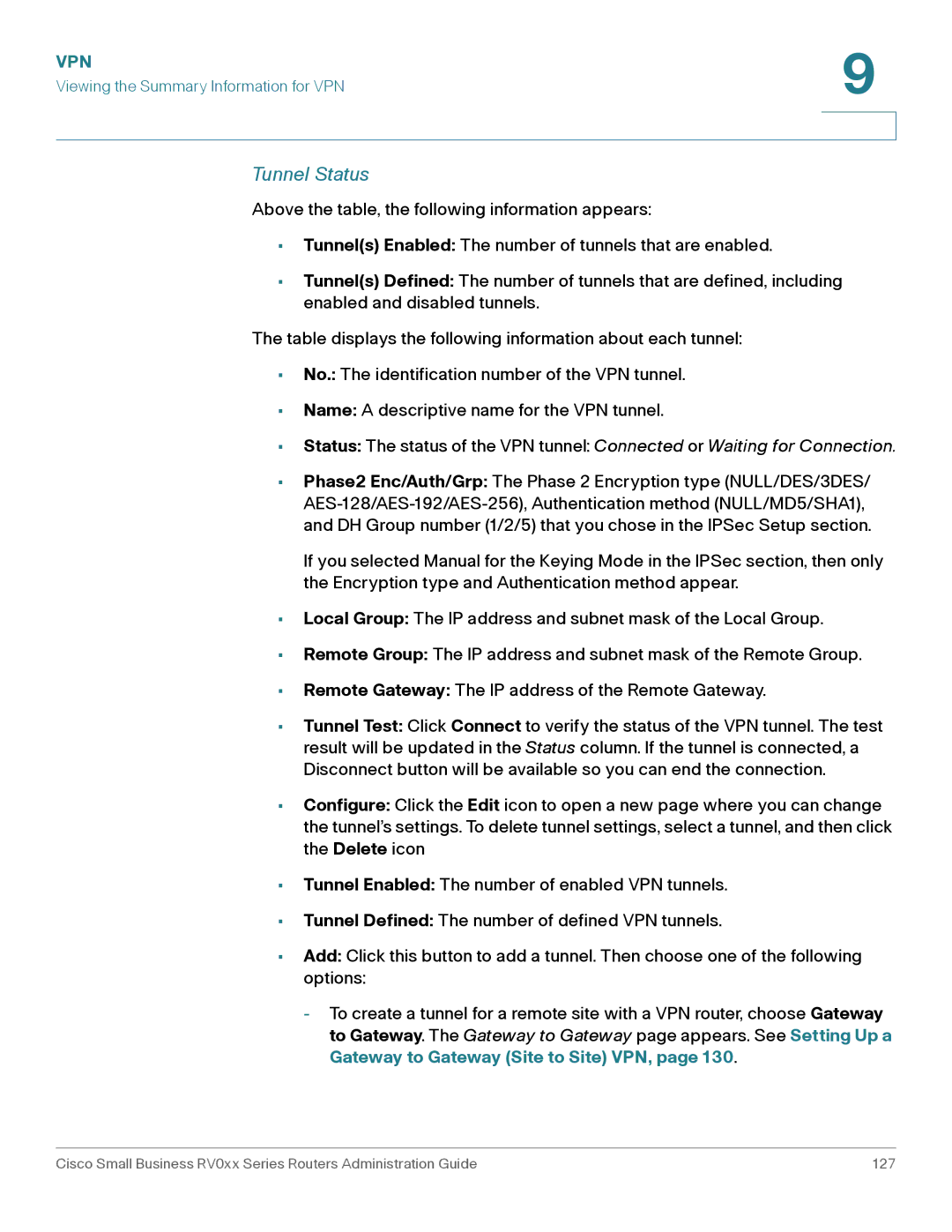VPN | 9 |
| |
Viewing the Summary Information for VPN |
|
|
|
|
|
Tunnel Status
Above the table, the following information appears:
•Tunnel(s) Enabled: The number of tunnels that are enabled.
•Tunnel(s) Defined: The number of tunnels that are defined, including enabled and disabled tunnels.
The table displays the following information about each tunnel:
•No.: The identification number of the VPN tunnel.
•Name: A descriptive name for the VPN tunnel.
•Status: The status of the VPN tunnel: Connected or Waiting for Connection.
•Phase2 Enc/Auth/Grp: The Phase 2 Encryption type (NULL/DES/3DES/
If you selected Manual for the Keying Mode in the IPSec section, then only the Encryption type and Authentication method appear.
•Local Group: The IP address and subnet mask of the Local Group.
•Remote Group: The IP address and subnet mask of the Remote Group.
•Remote Gateway: The IP address of the Remote Gateway.
•Tunnel Test: Click Connect to verify the status of the VPN tunnel. The test result will be updated in the Status column. If the tunnel is connected, a Disconnect button will be available so you can end the connection.
•Configure: Click the Edit icon to open a new page where you can change the tunnel’s settings. To delete tunnel settings, select a tunnel, and then click the Delete icon
•Tunnel Enabled: The number of enabled VPN tunnels.
•Tunnel Defined: The number of defined VPN tunnels.
•Add: Click this button to add a tunnel. Then choose one of the following options:
-To create a tunnel for a remote site with a VPN router, choose Gateway to Gateway. The Gateway to Gateway page appears. See Setting Up a Gateway to Gateway (Site to Site) VPN, page130.
Cisco Small Business RV0xx Series Routers Administration Guide | 127 |
